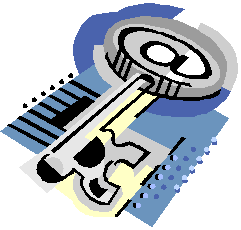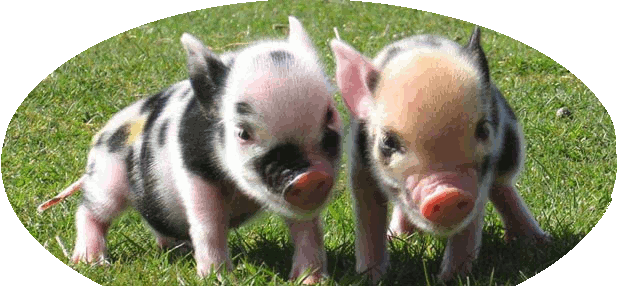Books |
 |
 |
|
| Centered
Riding (A Trafalgar Square Farm Bo... by Sally Swift |
Centered
Riding 2 (No. 2) by Sally Swift |
||
DVD's |
 |
 |
|
| Centered
Riding 1 by Sally Swift |
Centered
Riding 2 by Sally Swift |
||
VHS tapes |
![Centered Riding Today: An Informal Talk by Sally Swift [VHS]](http://ecx.images-amazon.com/images/I/41Vn6PfhzML._SL125_.jpg) |
![Centered Riding with Sally Swift [VHS]](http://ecx.images-amazon.com/images/I/51OSh9kd9iL._SL125_.jpg) |
|
| Centered
Riding Today: An Informal Talk by ... by Sally Swift |
Centered
Riding with Sally Swift [VHS] |
|
|
||||||||||||||
ResourcesTidbit |
|
Throw it to the pigs! (and Spin those plates!)It seems like almost as soon as folks learn how to find their soft eyes, deep breath, building blocks, and ground, they say something like 'This feels wonderful! How do I keep this all the time?' Well, the truth is, you don't. So let go of that right away! This is the first thing to 'Throw to the pigs.' Then you find out, you throw everything to the pigs. If you do, if you let go instead of keeping things static, and touch upon things briefly, going from one basic to the next, much like spinning plates, you'll find, surprisingly, it all comes back more and more often. When I first heard Sally Swift say 'throw it to the pigs!' I thought, 'Sure, if it's a mess, why not?!' But over time I've come to understand, it's helpful to throw it all to the pigs. Which seems mighty strange when you learn something and it feels great, maybe the best your back or neck has felt in years, and the pain has gone away, and you're floating over the ground. Why in the world throw this to the pigs? It's one of these tricks in riding, one of these paradoxes in life. Like getting a cat to come up to you, you can't pursue it. As soon as we attempt to make it happen or to hold on to something, we're no longer paying attention to what is actually happening. What we're really paying attention to is what we want to have happen. Which may or may not be what is happening at all! When we attempt to hold on to something, we're trying to eat the menu, instead of enjoying the food. Partly it's how our brain is put together. When we decide we want something and we're going to hang onto it, we've now superimposed a construct on top of reality and disconnected from what is actually going on with our bodies. The information which our body needs to adjust to the reality of the situation is no longer in our awareness or getting to the parts of our body that could use it to adjust to whatever is going on. To get what we want, we have to let go of it and get into the process of noticing where we really are. As we notice or take in where we are in relation to an ideal or a target, our body automatically makes the adjustment to get us closer to that ideal or target. The start of all of this, of being connected to our bodies and aware of the world at large, is to balance our head -- which will give us the soft eyes & deep breath as we tap into the parasympathetic nervous system. It's a new thing for many people to be in that quiet-brained place of observation, just noticing what is going on in a factual, objective way, maybe even without language. When we're in that place and being attentive to what is happening, the 'gestalt' portions of the brain can quickly and efficiently respond to what we're noticing is happening. So a running monologue, if it exists, might sound something like: 'my head is at a 5, a 6, a 4, uh... it's at an 8, a 7, a 6, etc.... ' where the numbers are arbitrary positions to help you detect where your head is at in space. A few minutes later, the monologue might sound something like: 'my head is at a 2, a 3, a 2, a 3, a 2, a 0, a 2, a 3, a 4, ....' Or if you're paying attention to the amount of tilt in your body, it might be: 'I'm tilting forward 1, 2, 1, back 1, back 4, forward 1, forward 2, neutral, etc.' The key is that part of the dialogue does not contain things like 'Yay! I got it!' or 'that's messed up...' because comments such as these don't help the body figure out what to do different. The body gets an idea that all is not well, but doesn't get information about how it's not well and so it cannot change anything. I might commiserate, and things might get worse because the body has now lost it's relationship to the physical world. The other key part is that these are not long, drawn out, thinking discourses about what's going on. It's not like there's an in depth internal discussion about which muscles are getting activated or where the head should be or how much tilting is correct. Nor is there a lot of puzzling about why something is happening. It's simply quick observation in the moment and then the moment is gone. It's very fleeting. It's very much about 'throw it to the pigs' and move on. Now, having thrown it to the pigs, it's not like we quit riding. We keep paying attention and neutrally observing what is going on. And the more we play with it the more familiar it becomes and so the more natural and more easy to do it. This part of it I think of as 'spinning plates.' When someone is spinning plates, they get one going, then move on to the next and get it going, then move on to the third and get it going, and before too long, they race back to the first one and give it another whirl. Sometimes some plates crash, but eventually they get to where they can keep more plates going. It is helpful to cycle through the basics in this manner while riding. This way, all of the basics help support each other. I usually start at the top, with my head, as this is where the awareness starts. I notice my head balance, my eyes, & my breathing. I then check my plumb line, heart, and pelvis. I'll play with the building blocks. If all of this is pretty good, I continue scanning more parts of my body, comparing them & contrasting them with images and sensations while maintaining my running monologue of 'this is here, that is there, this is that way...' If something is a bit off, I may stay with it for a few strides, but I'll remind myself to continue paying attention to the rest of my plates -- I don't any of them to crash, never mind all of them! If most plates can keep spinning pretty well, I may come back to one plate more often. For instance, in the warm up, I may pay more attention to the head and plumb line as these have a big pay-off. Generally, I will stay with each thing just long enough to get some feedback on it and then I'll move to the next thing. So riding becomes an awareness that is in the moment. By letting go of the past moment, I can be aware of the present moment. By letting go of the past and what I want and being aware of the present moment I can accurately assess what I do have and, amazingly, I can have the balance, comfort, and ease I so enjoy so I can move with the horse. So in a way, it's all a matter of spinning plates and throwing it to the pigs. |
|
| Copyright © July 2011 Lynn S. Larson | |
|
|
|
|
|
|
Books by Tim Gallwey on The Inner Game |
|
Books: Amazon Assoc. / Old Favs |
|
|
|
|
Links |
|
|
|
|
"The greatest achievement was at first and for a time a dream. The oak sleeps in the acorn, the bird waits in the egg, and in the highest vision of the soul a waking angel stirs. Dreams are the seedlings of realities."
~ James Allen

lynn@satoriconnections.com 512.869.7903







